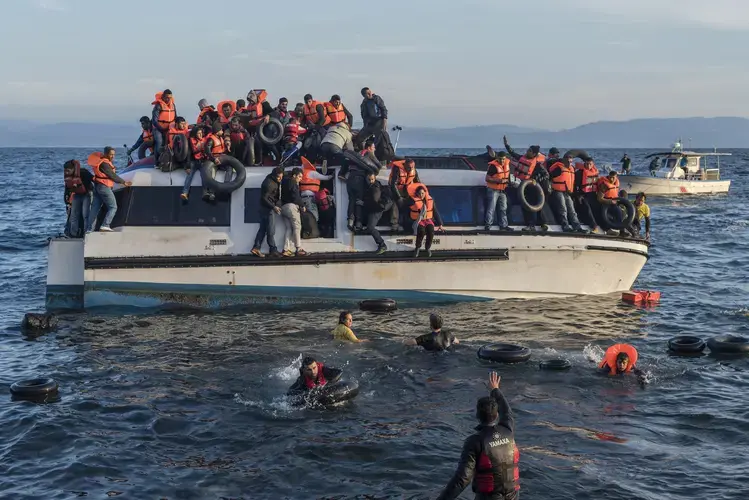
In 2015, a record 1.3 million people applied for asylum in Europe — nearly double the previous high, set in 1992 (the year after the Soviet Union collapsed). The arrivals predominantly hailed from the war zones of Syria, Iraq, and Afghanistan. Most came through Turkey, rode dinghies across the Aegean Sea to Greece, and then traveled, in vast human caravans, through the Balkans into Hungary, Austria, and Germany. They carried little more than a suitcase or two, some clothes, a bit of cash, and the hope for refuge and a better life.
Some European countries welcomed the arrivals with open arms; others closed their borders and left them to languish. But even the most generous hosts — Germany admitted 1.1 million refugees and migrants in 2015 — soon hit their limits: As social welfare networks were stretched thin and nativist fears of terrorism and Islamization grew, anti-immigrant political parties began to gain sway. The populist surge led many centrist leaders to reconsider their erstwhile openness, lest the rising right-wing backlash threaten the entire European project.
And so, in early 2016, the European Union reached a deal with Turkey, offering up to $6.6 billion (and the promise of visa-free travel to the EU for Turkish citizens) in exchange for Ankara’s help in blocking the departures. The plan worked. From 2015 to 2016, the number of people crossing the Aegean to Greece dropped by nearly 80 percent.

But Europe’s migration crisis wasn’t over.
With one sea route closed, another — from North Africa across the Mediterranean Sea to Italy — quickly expanded, with a record 181,000 people taking it last year. And that number is sure to keep growing: Sub-Saharan Africa currently has one of the highest birthrates in the world, and, according to one recent study, almost 800 million working-age people there — more than the current population of Europe — will enter the labor force between now and 2050. Few of them will find decent jobs; many won’t find work at all.
Alarmed by such numbers, Europe’s leaders are scrambling to respond. So far, their new policies have focused not just on securing the Continent’s borders but on tackling the problem at its source. Along with tough new immigration policies, Europe has launched a slew of development and state-building efforts in countries including Senegal and Somalia.
But lofty ideals are being betrayed by flawed implementation. At least one ill-conceived European-backed development project has already gone bust, while efforts to train and equip local security forces and militias have empowered gunmen known to torture, enslave, and kill civilians. Intentionally or not, European taxpayers are now funding a massive deterrence and interdiction effort that is largely invisible in Europe but profoundly damaging to Africa. It’s also futile: Despite the billions of dollars being spent, the current efforts won’t resolve the causes of Africa’s exodus or stop its flow.
Part I of our series begins in Mali, where failed efforts to kick-start the economy are having the opposite of their intended effect, sending even more people streaming north. Part II takes readers along Niger’s lawless smuggling routes, where the military’s efforts to block departures have elevated the body count. In Part III, our reporter tours Libya’s new detention-industrial complex, where would-be migrants are enslaved and ransomed by European-backed militias. Part IV tells the story of one man who fled Senegal for Italy, only to be caught and — like so many others — sent back home to a life of humiliation and poverty. And Part V explores how European leaders are navigating the moral and political consequences of their own decisions.
Those leaders may not know it yet, but Africans won’t be the only ones to suffer. The increasingly desperate measures to barricade its borders may also end up costing Europe its soul.














